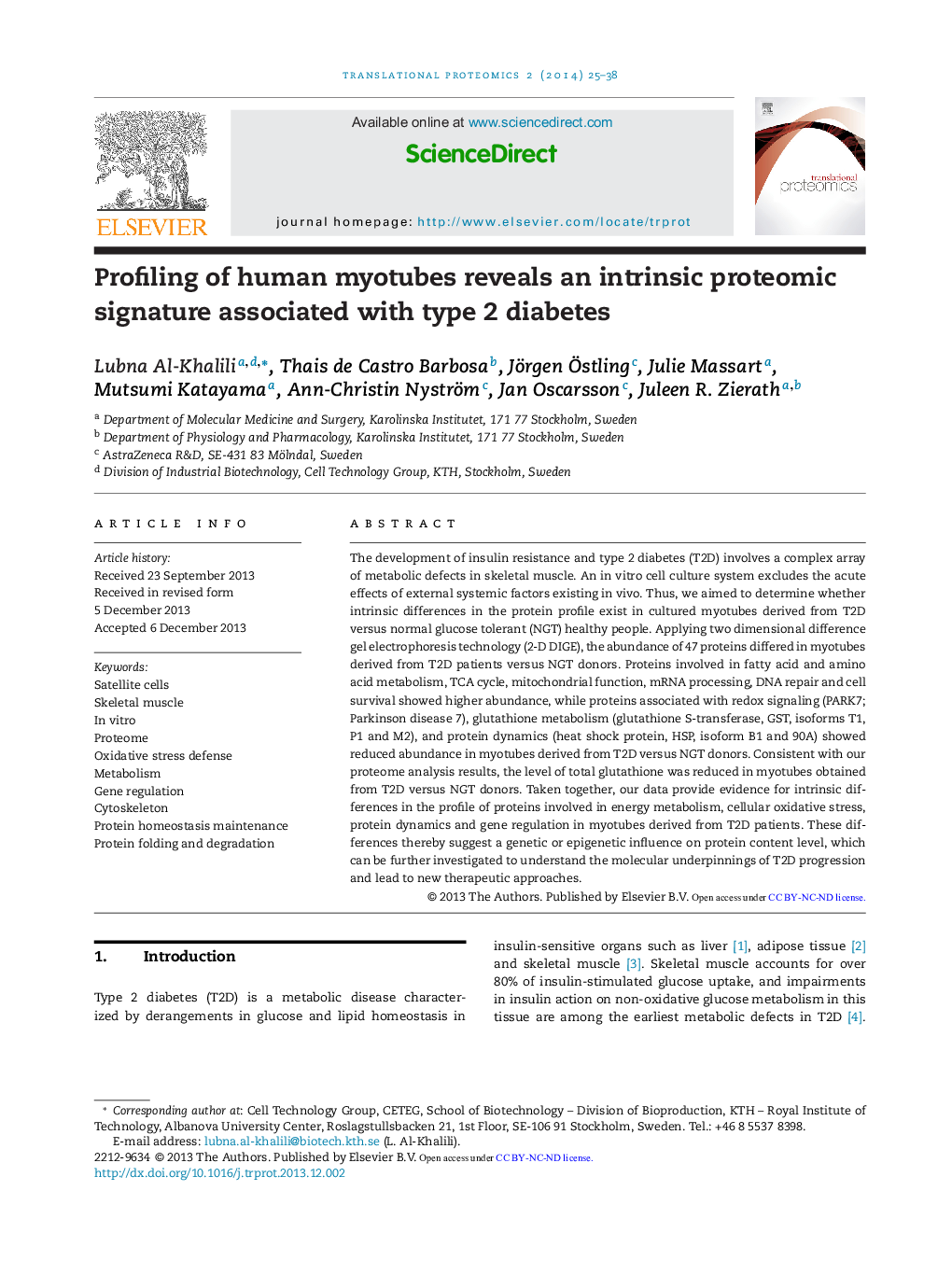| Article ID | Journal | Published Year | Pages | File Type |
|---|---|---|---|---|
| 2030449 | Translational Proteomics | 2014 | 14 Pages |
•Proteome analysis using 2-D DIGE on cultured myotubes from T2D patients was performed.•Differentially abundant proteins involved in energy metabolism and oxidative stress are elevated in myotubes derived from T2D patients versus NGT individuals.•An altered profile of proteins is associated with protein dynamics and gene regulation in myotubes derived from T2D patients.
The development of insulin resistance and type 2 diabetes (T2D) involves a complex array of metabolic defects in skeletal muscle. An in vitro cell culture system excludes the acute effects of external systemic factors existing in vivo. Thus, we aimed to determine whether intrinsic differences in the protein profile exist in cultured myotubes derived from T2D versus normal glucose tolerant (NGT) healthy people. Applying two dimensional difference gel electrophoresis technology (2-D DIGE), the abundance of 47 proteins differed in myotubes derived from T2D patients versus NGT donors. Proteins involved in fatty acid and amino acid metabolism, TCA cycle, mitochondrial function, mRNA processing, DNA repair and cell survival showed higher abundance, while proteins associated with redox signaling (PARK7; Parkinson disease 7), glutathione metabolism (glutathione S-transferase, GST, isoforms T1, P1 and M2), and protein dynamics (heat shock protein, HSP, isoform B1 and 90A) showed reduced abundance in myotubes derived from T2D versus NGT donors. Consistent with our proteome analysis results, the level of total glutathione was reduced in myotubes obtained from T2D versus NGT donors. Taken together, our data provide evidence for intrinsic differences in the profile of proteins involved in energy metabolism, cellular oxidative stress, protein dynamics and gene regulation in myotubes derived from T2D patients. These differences thereby suggest a genetic or epigenetic influence on protein content level, which can be further investigated to understand the molecular underpinnings of T2D progression and lead to new therapeutic approaches.
Graphical abstractFigure optionsDownload full-size imageDownload as PowerPoint slide
